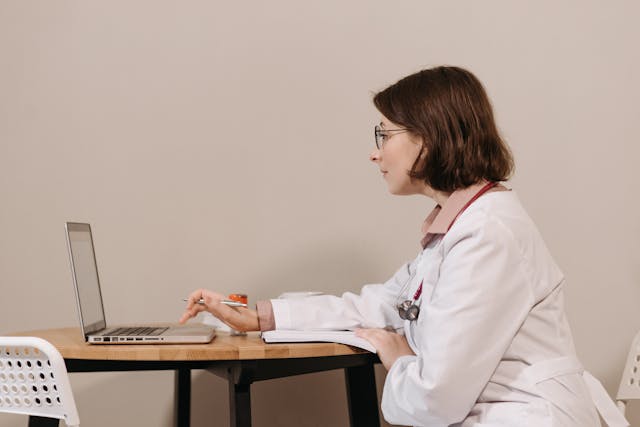Introduction
Effective medical record-keeping ensures high-quality patient care, accurate diagnosis, and efficient treatment planning. A Source-Oriented Medical Record System (SOMR) offers a unique approach to organizing patient information, making it easier for healthcare professionals to access and utilize comprehensive patient data. This guide explores SOMRs, how they compare to other charting methods, and who can benefit the most from this system.
What is a source-oriented medical record?
A source-oriented medical record, also known as a source-oriented record (SOR), organizes patient records by the source of information, such as nursing records. Each type of information, such as lab reports, radiology results, nursing and physical therapy notes, and physician notes, is filed in its designated section within the patient’s chart. This structure allows for quick and easy access to medical documentation, which can be particularly useful in large healthcare facilities where various departments generate different pieces of information about a patient.
Comparison with other charting methods
Source-oriented medical records differ significantly from other charting methods, such as problem-oriented medical Records (POMR) and integrated medical records (IMR). SOMRs are organized by the source of information, meaning each department or type of electronic health record has its dedicated section. This method allows quick access to specific information, which is particularly beneficial in larger healthcare settings where multiple departments contribute to patient care.
On the other hand, POMRs are organized by patient problems and include a problem list, progress notes, and treatment plans (Physiopedia, n.d.). This method promotes a holistic view and assessment of the patient's health status by focusing on specific health issues and their management. It encourages a more integrated approach to patient care by ensuring that all patient health aspects are considered and documented.
Integrated medical records combine information from all sources into a single chronological record, providing a comprehensive view of the patient’s medical history (Lacar, 2020). While this approach facilitates continuity of care by providing a unified record, it can be more time-consuming to navigate due to the volume of information. IMRs are beneficial for maintaining a complete and continuous record of a patient's health journey, but they may lack quick access to specific information that SOMRs provide. IMRs are also often used in electronic medical records.
Advantages of a Source-Oriented Medical Record System and progress notes
Using a Source-Oriented Medical Record System in healthcare has several notable benefits (Wayne, 2013). This method enables healthcare providers to easily monitor each discipline’s progress and specific interventions. Here are some of the key advantages:
- Specialty-specific progress tracking: Healthcare providers can focus on their areas of expertise without being overwhelmed by unrelated data. Physical therapists document their findings in the progress notes section, alongside other specialty providers, to address patient diagnoses and problems in an integrated and coordinated manner.
- Chronological note organization: Notes are organized chronologically within each section, making it easier to locate recent updates and treatment plans.
- Enhanced discharge planning: By maintaining clear, separate sections for each discipline, SOMR facilitates the tracking of patient progress across various specialties, aiding in coordinated discharge planning.
- Ease of use for individual disciplines: Each healthcare provider can quickly locate their specific section, reducing the time needed to find relevant forms and documentation.
- Detailed documentation: Allows for detailed narrative charting, providing a comprehensive account of patient care.
Overall, SOMR can improve physicians’ efficiency and accuracy in documenting patient care, benefiting both healthcare providers and patients.
Disadvantages of the Source-Oriented Medical Record System
While SOMR offers several benefits, there are also notable disadvantages (Wayne, 2013). These can impact the efficiency and effectiveness of patient care. Here are some key drawbacks:
- Difficulty in accessing current information: Finding up-to-date information can be challenging in complex cases with multiple specialists involved. Additionally, using a progress note in Source-Oriented Medical Records can be problematic as it may not provide a cohesive view of the patient's ongoing issues.
- Fragmented data: Information is often siloed within each specialty’s section, making it time-consuming to compile a complete picture of the patient’s care.
- Limited cross-referencing: The isolated nature of documentation can lead to limited cross-referencing between disciplines, resulting in duplicated or missed information.
- Inconsistent documentation styles: Different departments may use varying styles and terminologies, causing confusion and inaccuracies.
- Increased risk of errors: Record separation can increase the risk of errors, such as conflicting information or omissions.
Despite these challenges, recognizing and addressing these disadvantages can help optimize the use of SOMR in healthcare settings.
Key takeaways
Source-Oriented Medical Records offer several benefits, including tracking patient progress by specific care specialties, ensuring that notes are organized chronologically, and facilitating coordinated discharge planning. These features help healthcare providers deliver focused and efficient patient care, enhancing the overall treatment process. However, SOMR also has limitations, such as difficulty finding up-to-date information in complex cases, fragmented data, and increased risk of errors due to inconsistent documentation styles.
Despite these challenges, SOMR remains a valuable document and tool in healthcare settings where detailed narrative charting and specialty-specific information are crucial. Healthcare providers can mitigate the drawbacks of SOMR by employing supplementary methods and technologies to ensure comprehensive patient records. By understanding both the advantages and disadvantages of SOMR, healthcare professionals can make informed decisions about their documentation practices to improve patient outcomes and operational efficiency.
Try Carepatron: The platform built for a new way of working
Carepatron is designed to streamline healthcare operations and enhance patient care through a user-friendly interface and robust features. This platform offers tools for efficient clinical documentation, patient management, and seamless communication, making it an invaluable resource for healthcare professionals. By integrating Carepatron into your practice, you can ensure accurate record-keeping, reduce administrative burdens, and focus more on patient care.
Experience the benefits of a comprehensive and intuitive healthcare software solution. Sign up for Carepatron today and take the first step towards your healthcare organization and optimizing your practice for better patient outcomes.
.png)
References
Lacar, M. (2020). Integrated medical data record (iMDR) system. International Journal of Advanced Trends in Computer Science and Engineering, 9(3), 3649-3654. https://doi.org/10.30534/ijatcse/2020/174932020
Physiopedia. (n.d.). Problem-oriented medical record. https://www.physio-pedia.com/Problem_Oriented_Medical_Record
Wayne, G. (2013, June 8). Documentation and reporting in nursing. Nurseslabs. https://nurseslabs.com/documentation-reporting-in-nursing/#h-advantages-and-disadvantages-of-source-oriented-medical-record




.jpg)







.jpg)



.jpg)

.jpg)
.jpg)
.jpg)
.jpg)
.jpg)


.jpg)


